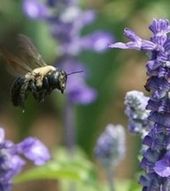
© AFP
Weakened by inbreeding and disease, bumble bees have died off at an astonishing rate over the past 20 years, with some US populations diving more than 90 percent, according to a new study.
The findings are of concern because bees play a crucial role in pollinating crops such as tomatoes, peppers and berries, said the findings of a three-year study published in the
Proceedings of the National Academy of Sciences (PNAS). Similar declines have also been seen in Europe and Asia, said Sydney Cameron, of the Department of Entomology and Institute for Genomic Biology at the University of Illinois, the main author of the study.
"The decline of bumble bees in the US is associated with two things we were able to study: the pathogen
Nosema bombi and a decline in genetic diversity. But we are not saying
Nosema is the cause. We don't know," said Cameron. "It's just an association. There may be other causes."
He added that the decline is "huge and recent," having taken place in the last two decades.